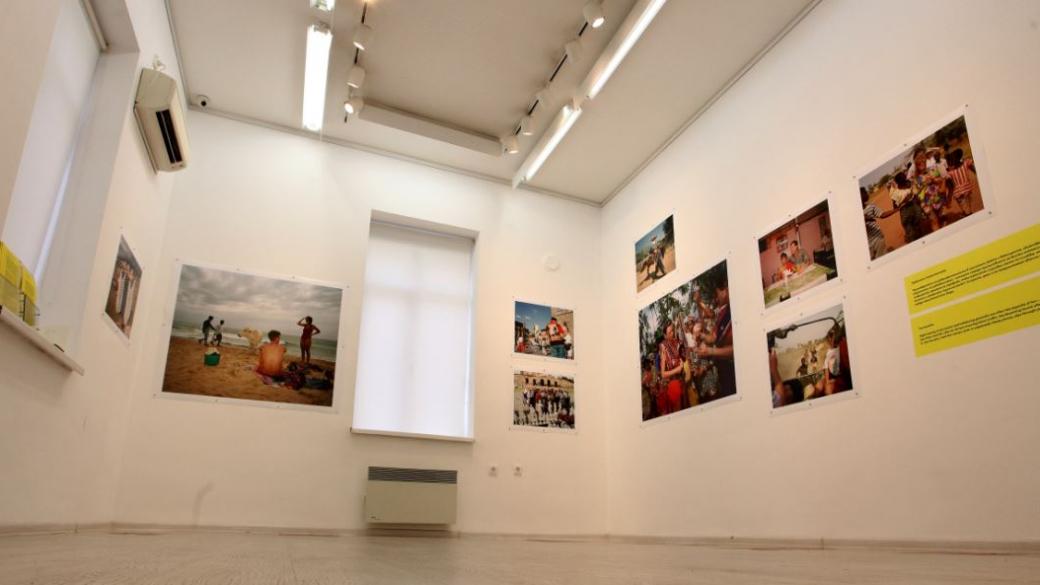The Hardships of Art Entrepreneurship
The competition for projects is great, unlike the number of funding organizations

© ECONOMIC.BG / Икономика/Красимир Свраков
„Фотосинтезис” обединява галерия, магазин за фотографска техника, печатница и кафене
Christo is probably the most prominent Bulgarian art entrepreneur, but he is not the only one. Geri Turiyska with her Mailbox for Fairy Tales, Sariev Gallery, Valeri Gyurov with his private museum – The Red Flat, Jacqueline Wagenstein with CineLibri follow in his footsteps successfully. A movement of Bulgarian art entrepreneurs is being created who develop products and events, experiment with our taste for art and are not afraid to talk about themselves as entrepreneurs.
“In Bulgaria, there has been a free market for just 30 years, and entrepreneurship in art has not managed to develop yet. But people have tried and there are good examples. It should not be limited to a handmade or a gallery shop. If only there were an audience with a need for culture, habits and a willingness to pay for a cultural product, a good economic environment, relieves for starting such a business, support from institutions... There are no such conditions and everyone relies entirely on themselves,” says Stefka Tsaneva, program coordinator in the cultural department of the Goethe-Institut Bulgaria, curator and cultural freelance manager.
Jacqueline Wagenstein, who is the founder of the CineLibri festival, agrees and tells the story of the project. I wanted to mark the 25th anniversary of Colibri Publishers with an unusual, meaningful, and memorable event. And cinema is inseparable part of our activities. This is how the idea of a film festival for literary adaptations was born. We were lucky that our success came immediately, in such an inspiring way that it made us move forward, despite the difficulties related to funding. We enjoy the support of Sofia Municipality and the Ministry of Culture, but it is not enough. We also rely on sponsorship, donations, etc. When you want to nurture and develop a taste for arthouse cinema, you can’t rely on attendance revenue...”
Even with small steps, the most traditional forms of art entrepreneurship can start developing steadily. Stefka gives examples of new and quality galleries that not only “sell”, but support art, encourage the creation of new audiences, and new collectors. This market is experiencing an international upswing. According to Art Basel and UBS The Art Market Report 2019, the global art market has grown by 6% on an annual basis in 2018, with sales of USD 67.4 billion. According to experts, small galleries are faced with the same issues of remaining sustainable as original investors – they often do not receive back their investment in young authors, and the marketing costs for various activities, even online, are high.
“In order for an art project to be sustainable, it has to build an understanding and a loyal audience that is ready to pay for the content that is offered to it.” The only possible way for me is to diversify the content and combine more profitable and less profitable activities. Photosynthesis has a gallery. It is part of a whole establishment together with a shop for photographic equipment, a print shop and a cafe. They all complement each other,” Stefka says. She also gives as an example the gallery owner Veselina Sarieva, who also organizes art events, publishes catalogues and books. All of these activities are important for the environment, too. “The Sariev Gallery was one of the most prestigious fairs in Europe, which is an incredible achievement.”
We continue our conversation about art marketing. Stefka, who is part of the Goethe-Institut, says that the Institute has emerged from the classic image of an “institution” through new partnerships and with support for independent projects, attracting new and young audiences.
Jacqueline says that the audience of CineLibri is “intelligent and thirsty for quality forms of entertainment.” The marketing structure includes various forms of advertising and PR, sharing and work in social media. “Consistent, strategic efforts are needed to relief the private initiative in this area. What criteria should determine the absolute and relative importance of a long-term cultural event? Who has the expertise and the moral right to determine these criteria? And, on that basis, to evaluate what percentage of state funding the entrepreneur deserves,” she explains.
Stefka names the most serious problem – the culture in Bulgaria happens entirely on a project basis, for an event or project for up to one year. Thus, the life of attempts at art entrepreneurship is shortened forcibly. Competition is high, unlike the number of funding organizations, sponsors and audiences, but there are many opportunities for partnerships. In such a small and resource-limited stage, co-operation is a better solution,” Stefka says.
Jacqueline puts an end to the conversation with a smile: “In art entrepreneurship in Bulgaria, a pinch of idealism is a must. Managing an art project is no easier than managing another business. But it’s more pleasant. Any activity in which you put your mind and heart is doomed for success, sooner or later.”
